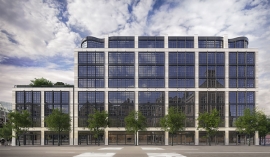Industry Trends
Statement from the National Multifamily Housing Council (NMHC) and the National Apartment Association (NAA) in response to President Trump’s State of the Union address:
Apartment market conditions continued to soften according to results from the January National Multifamily Housing Council’s (NMHC) Quarterly Survey of Apartment Market Conditions. The Market Tightness (36), Sales Volume (40) and Debt Financing (38) Indexes landed below the breakeven level of 50, while the Equity Financing Index increased to 58. In addition, the survey found that half of respondents expect green financing to increase in 2018.
“The latest survey results underscored the prevailing view at our recent Apartment Strategies Conference that we are late in the current cycle,” said NMHC Chief Economist Mark Obrinsky. “While some seasonality comes into play, the Market Tightness Index was a little below its long-term January average, indicating market conditions are slightly weaker than normal. Demand for apartments overall remains strong and equity capital still looks favorably on the apartment sector. However, many owners are satisfied with their holdings and more inclined to stand pat.”
New research released today by Freddie Mac indicates that affordability and changing attitudes towards renting are playing a significant role in the growing demand for rental housing. The study finds that an increasing number of America's renters are satisfied with their living situation and consider it the most affordable option for the foreseeable future. More renters believe this despite their view that housing prices -- both to purchase and rent -- continue to rise and supply continues to tighten.
Market conditions for the apartment industry remained soft in the National Multifamily Housing Council’s (NMHC) October Quarterly Survey of Apartment Market Conditions. While the Market Tightness (37), Sales Volume (45) and Equity Finance (46) Indexes remained below the breakeven level of 50 – with the Debt Financing Index (51) edging just above 50 – there was little change compared with three months earlier.
“The apartment market is headed into a seasonally slow leasing period with new deliveries easing upward pressure on rents and occupancy rates in many markets around the country,” said NMHC Chief Economist Mark Obrinsky. “The big increase in multifamily starts in 2015 and 2016 is finally filtering through to the marketplace on a broad basis.”
“Leasing activity appears to have picked up in Texas and Florida in the aftermath of Hurricanes Harvey and Irma. Some respondents also noted that fires on the West Coast may be pushing occupancy rates up,” said Obrinsky. “Elsewhere, new deliveries are leading to concessions becoming more commonplace.”
The Market Tightness Index decreased from 42 to 37, marking the eighth consecutive quarter of overall declining conditions. Forty percent of respondents reported looser conditions than three months prior, compared to just 14 percent who reported tighter conditions.
The Sales Volume Index declined two points to 45. Over a quarter (28 percent) of respondents indicated lower sales volume compared to the previous three months, compared to 19 percent who reported higher volume over the past quarter.
The Equity Financing Index remained unchanged at 46, with almost two-thirds (62 percent) reporting unchanged conditions. This marks the eighth consecutive quarter of declining conditions.
The Debt Financing Index increased from 47 to 51, crossing the breakeven level of 50 for the first time since July 2016, indicating improving overall conditions. While most respondents (62 percent) reported unchanged conditions, 14 percent believed that conditions for debt financing had become more favorable. Conversely, 12 percent of respondents reported worse conditions for debt financing compared to three months prior.
About the Survey:
All four indexes of the National Multifamily Housing Council’s (NMHC) July Quarterly Survey of Apartment Market Conditions remained slightly below the breakeven level of 50, the fourth consecutive quarter indicating softening conditions. The Market Tightness (43), Sales Volume (47), Equity Financing (46), and Debt Financing (47) Indexes all improved from April, but still hovered just below 50.
A report by Hoyt Advisory Services, Dinn Focused Marketing, Inc. and Whitegate Real Estate Advisors, LLC prepared for the National Multifamily Housing Council and the National Apartment Association was released. You can download the entire report here. Below is the executive summary:
Residential housing markets across the country are booming, and nowhere is this more visible than in New York. Developers are looking beyond traditional neighborhoods in Manhattan to the outer boroughs in the hopes of finding accretive deals in a challenging acquisition environment. Expanding into new neighborhoods however brings new challenges for property owners who struggle to maintain multiple properties in different areas.
The Canadian Federation of Apartment Associations is disappointed with the government’s Bill to legalize and regulate marijuana. In a single family home, what an owner-occupant does largely affects only themselves, whereas in multi-unit dwellings, an occupant’s actions in one unit can very often have significant effect on the occupants of other units.
Despite moderate improvements over the first quarter of 2017, all four indexes of the National Multifamily Housing Council’s (NMHC) Quarterly Survey of Apartment Market Conditions remained below the breakeven level of 50. The Market Tightness (41), Sales Volume (30), Equity Financing (42), and Debt Financing (41) all indicated continued softening conditions in apartment markets even as demand for apartment residences remains strong.
“Although all four indexes rose in April, they remain below the breakeven level of 50,” said Mark Obrinsky, NMHC’s Senior Vice President of Research and Chief Economist. “After years of lagging behind the increase in apartment demand, new supply is finally coming online in sufficient quantity to alter this supply-demand imbalance. In particular, class A supply in many urban core submarkets has led to increased concessions to fuel lease-up activity. Even so, occupancy rates remain close to historic highs.
“In the investment market, some of the weakness in property sales is seasonal, but respondents reported caution on the part of buyers as well as debt and equity capital sources – in particular in regard to construction lending. Increased uncertainty about the outlook for interest rates and cap rates also appears to be playing a role.”
The Market Tightness Index increased from 25 to 41, as one-fifth of respondents (20 percent) reported tighter conditions than three months ago, up from eight percent in January. Over one-third (38 percent) noted looser conditions. While this marks the sixth consecutive quarter of overall declining conditions, it does represent an uptick from the previous quarter.
The Sales Volume Index rose slightly, from 25 to 30. Half of respondents reported lower sales volumes from three months earlier, while 11 percent reported higher sales volume.
The Equity Financing Index rose from 33 to 42, marking the sixth quarter in a row below the breakeven level of 50. Over half (52 percent) of respondents reported unchanged equity financing availability from three months ago, while just over one-quarter (27 percent) of respondents considered financing less available. Twelve percent regarded financing as more available, up from six percent in January 2017.
The Debt Financing Index saw the largest increase of all four indexes, rising from 14 to 41, as respondents that reported worse conditions for borrowing compared to the three months prior fell to about one-third (35 percent) from almost three-quarters (74 percent). Forty-four percent of respondents reported no change in the debt market, with 16 percent reporting better conditions, up from only one percent in the previous quarter.
Respondents also noted little change in the Low Income Housing Tax Credit (LIHTC) market. Almost two-thirds of respondents (excluding those who chose “don’t know or not applicable”) reported either the same number or slightly more buyers for LIHTC transactions compared with three months ago. And 70 percent of respondents reported that pricing for LIHTC transactions has changed little since the 10-15 bps drop immediately following the Presidential election. About one-sixth (17 percent) reported somewhat higher pricing.
About the Survey:
The April 2017 Quarterly Survey of Apartment Market Conditions was conducted April 10-17, 2017; 140 CEOs and other senior executives of apartment-related firms nationwide responded.
View the full data online at nmhc.org/QS-April-2017
The apartment sector continued its record run, reflected in the National Multifamily Housing Council’s (NMHC) newly released 2017 NMHC 50 – the authoritative ranking of the nation’s largest apartment owners, manager, developers, general contractors, and, new this year, syndicators.











